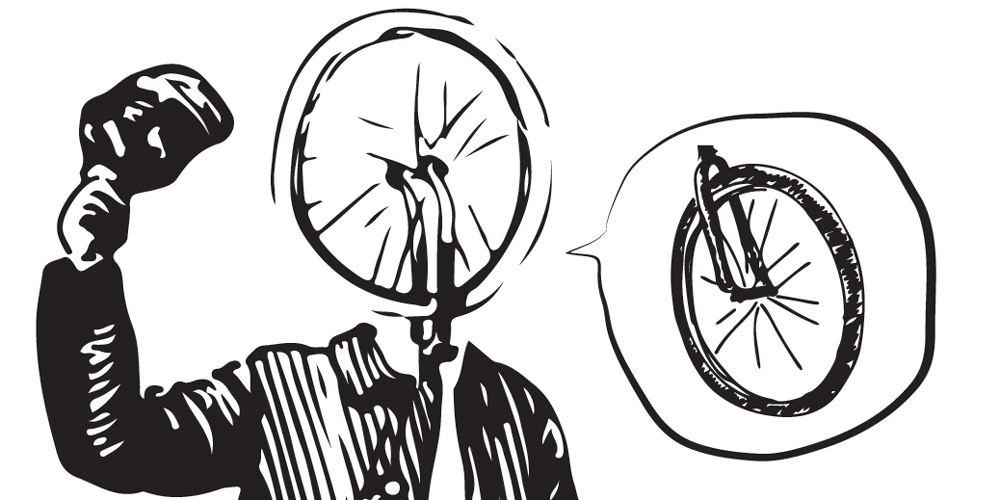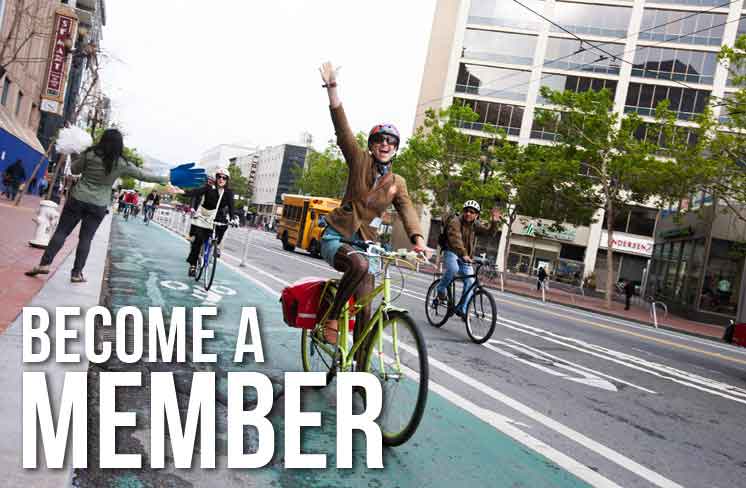Wheel Talk for Wheel People is a monthly advice column written by program director Christopher White. Though bikes, biking, and getting around SF are our areas of expertise, feel free to ask anything! To submit your questions, please click here.
Wheel Talk, we are seeing a revolution in personal transportation devices on our streets. There are skateboards, motorized skateboards, scooters, motorized scooters, electric-assisted bicycles. Others are probably being invented all the time. Do you see a future where they all successfully coexist in the bicycle lanes? —Old-School Pedaler
Dear Old-School Pedaler: For any of you who are still disappointed that we haven’t gotten the jetpacks we were promised, this future we’re living in offers many transportational consolations. And while we might remain tethered to the ground, is that such a bad thing? Those hypothetical jetpacks would almost certainly have spewed all kinds of foul exhaust into our air, just as the all-too-real single-occupancy cars clogging our streets do. The multitude of modes you mention generally do not. And they take up far less space on the roadway than most motor vehicles.
So why do many people who bike feel upset at the sight of all the scooters and e-unicycles sharing the bike lanes with us, if we’re all contributing to cleaner air and less congested streets? I believe that the reasons reside not so much with these new modes themselves, but rather with the ways people use (or misuse) them, and the systemic problem of need for separate bike lanes outpacing implementation.
Let’s first address the problem of how people are using them. Until fairly recently, modes like push scooters and skateboards were associated with kids; they have been seen primarily as toys, regardless of their viability as transportation. Once manufacturers started equipping them with electric motors, many more people started hopping on them. But their skyrocketing popularity has not been matched by an overnight change in perception. Even people who use them likely still perceive them as toys, which can’t help but affect how they handle them. While lots of people get annoyed at the boards themselves, I believe it’s their users’ behavior that’s actually annoying.
I’d like to see the companies that manufacture or rent these new modes do more to educate users in safety practices, which are largely the same as for bikes: ride predictably, including following the rules of the road; stick to bike lanes rather than sidewalks; wear a helmet (even though adults are no longer required to); don’t just abandon your rented scooter right in others’ paths. But I also believe that, as people accept these new modes as just another transportation choice, behavior will improve and coexistence will become second nature.
As for the need for more separate bike lanes implemented faster, we invite all of the dedicated users of e-scooters and other motorized boards to join the SF Bicycle Coalition and throw your weight, voices and votes behind the movement for safe and accessible infrastructure throughout San Francisco.
Wheel Talk, are parking garages in San Francisco required to provide free, safe parking for bikes? Often I think of biking to an event where there is not a safe place for parking a bike, but there are car parking lots nearby, such as Davies Symphony Hall near Civic Center. —Bike to Beethoven
Dear Bike to Beethoven: The short answer to your question: yes, parking garages in SF are generally required to provide free “Class 2” bike parking, or standard bike racks intended for relatively short-term use. These spots will generally keep your bicycle protected from the elements. But will they be safe?
An important bike security strategy is to park in well-lit locations with a lot of foot traffic. Thieves are less likely to target bikes in conspicuous locations (though there are exceptions to every rule, and no theft-prevention strategy or device is foolproof). Parking garages are usually neither well-lit nor well-trod. The bike racks in them are also often out of sight of attendant booths. For these reasons, they can be favorite targets of bike thieves. Racks out in the open are likely safer bets. Just be sure to lock your bike up well!


